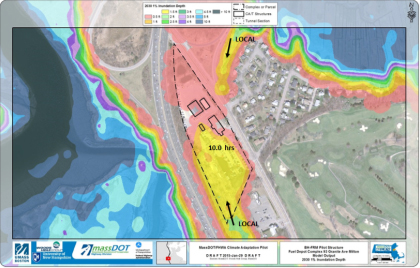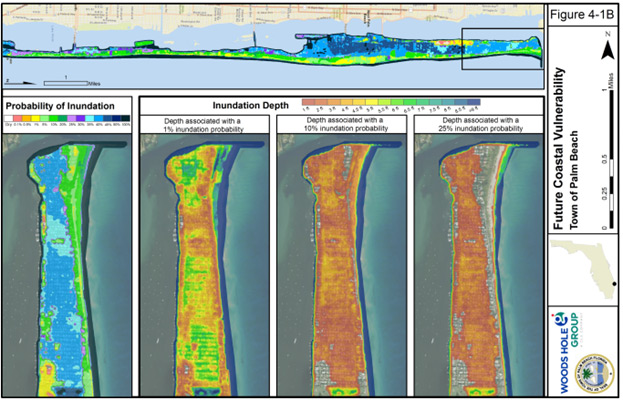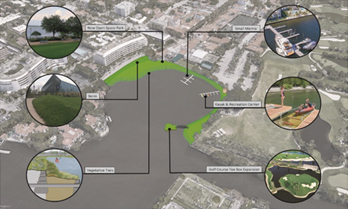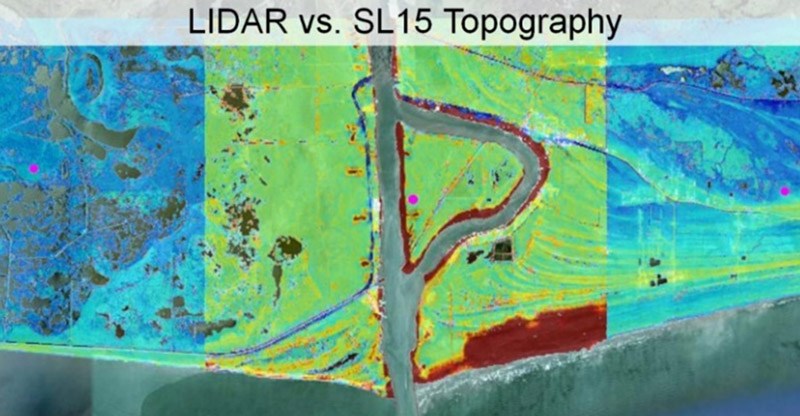Coastal Flood Risk Modeling

Our award-winning, physics-based, probabilistic approach to modeling flood risk allows for coastal communities to not only be informed, but take the right actions.
Assessing the Vulnerability of MassDOT’s Coastal Transportation Systems to Future Sea Level Rise and Coastal Storms, and Developing Adaptation Strategies
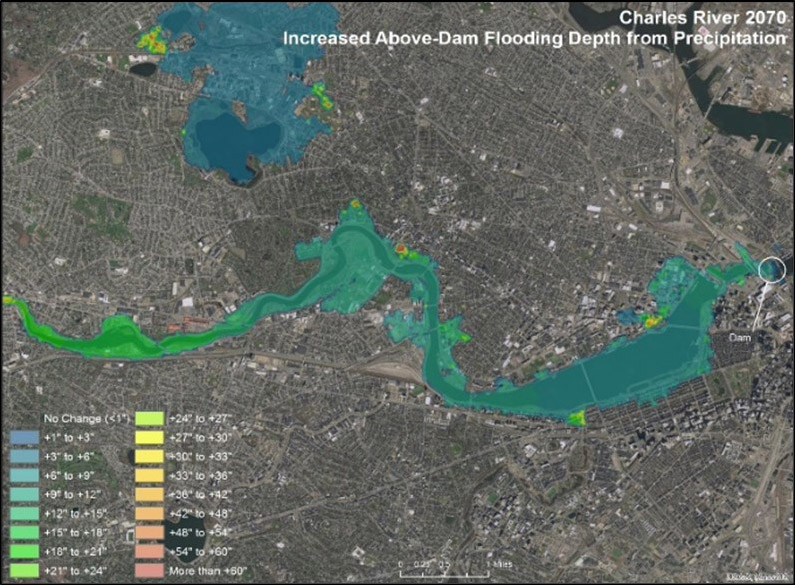
Woods Hole Group has supported vulnerability assessments by measuring, modeling, and forecasting flooding due to storms, sea level rise, climate change influences, and combined effects.
A complete vulnerability assessment recognizes the dynamic physical processes and timing associated with storms, along with increasing risks of sea level rise and climate change.
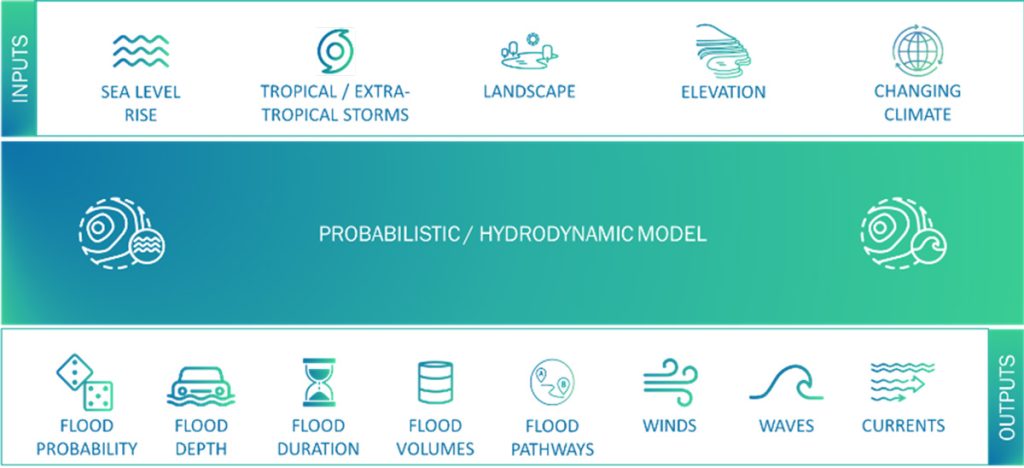
In order to determine the vulnerability of the systems, a highly resolved (less than 10 meters), numerical hydrodynamic model was developed to assess the combined impact of sea level rise, storm events (tropical and extra-tropical), winds, tides, river discharge, and waves. Tropical and extra tropical events were simulated using an ensemble Monte Carlo approach to develop probabilistic flooding distributions.
Results from the model were used to assess risk for assets throughout the transportation systems of the Commonwealth and to determine appropriate regional and site-specific adaptation designs to build resilience for the transportation networks.
Woods Hole Group designs coastal resiliency projects through an understanding of the storm surge that influences the site under both existing, and future, conditions.
Important factors such as the inundation depth levels, wave impacts, flood pathways, flood volumes, and probability of occurrence are all key considerations for developing cost-effective design approaches expected to function for current conditions, and perhaps more importantly, conditions occurring in a changing climate.
Additionally, the results are being used by numerous other stakeholders (e.g., health care, universities, water commissions) and communities to assess risk and develop resilient solutions.
Coastal Resilience Solutions for South Boston
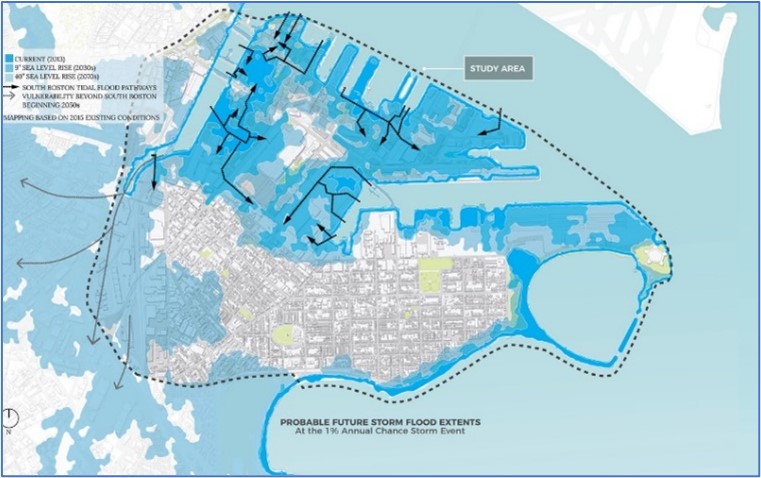
Location: Boston, MA
Client: City of Boston
Project Characteristics
- Sea Level Rise Assessment and Projections
- Flood Pathway Analysis at High Resolution (street-level)
- Combined Sea Level Rise and Storm Surge
Risk to critical infrastructure and Assets - Coastal Engineering Resiliency Design
- Public Engagement and Outreach
- Recommended Design Flood Elevations
- Development of Flexible, Phased Engineering Adaptations
Woods Hole Group was part of a multidisciplinary team that developed near-term and long-term strategies and engineering approaches for protecting South Boston from sea level rise and coastal flooding. The project was led by the City of Boston Environment Department and the Boston Planning & Development Agency. Coastal Resilience Solutions for South Boston was the second neighborhood coastal resilience plan from Climate Ready Boston, the City of Boston’s ongoing initiative to adapt to climate change.
These study areas were selected because they are currently at risk from 1% annual chance coastal flooding and have high concentrations of vulnerable residents and critical infrastructure, as indicated by the Boston Harbor Flood Risk Model produced by Woods Hole Group and MassDOT.
The project involved extensive technical, design, and stakeholder engagement efforts, and Woods Hole Group was involved in all these efforts.
Woods Hole Group led the mapping of flood pathways, phasing strategies that accounted for evolving flood pathway dynamics, and development of resilient design criteria for future flood protection systems using results from the Boston Harbor Flood Risk Model. Through iterative design and stakeholder engagement, potential flood protection strategies for critical locations were identified, evaluated, and developed. A set of evaluation criteria, established with input from stakeholders, guided the design process towards feasible, effective, and flexible solutions that achieve multiple benefits over long time horizons.
This project won the Boston Society of Landscape Architects 2020 Analysis & Planning Merit Award and the American Planning Association, Massachusetts Chapter 2019 Sustainability & Resiliency Award.

